Found art on display at TGW Gallery
by Jack Foran

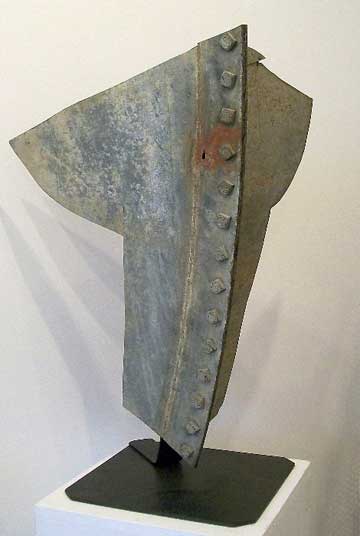
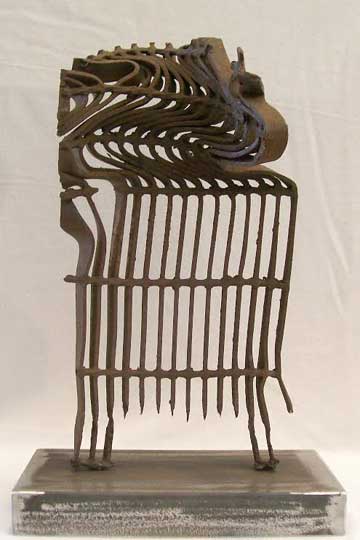

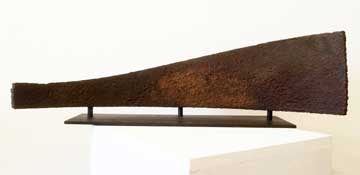
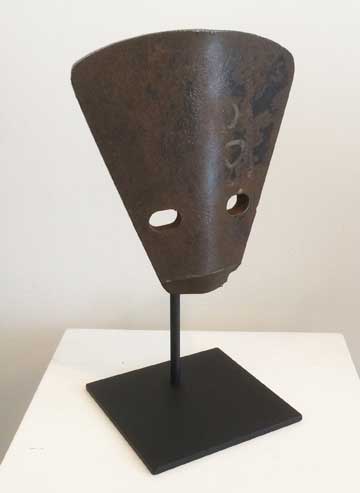
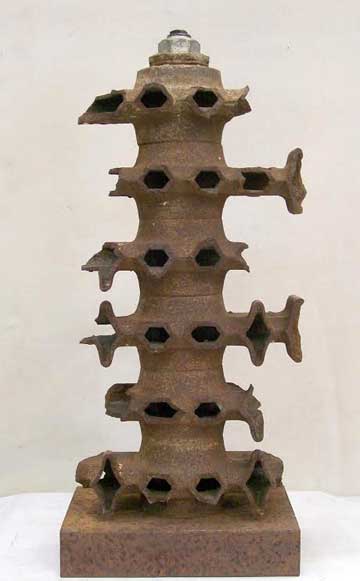
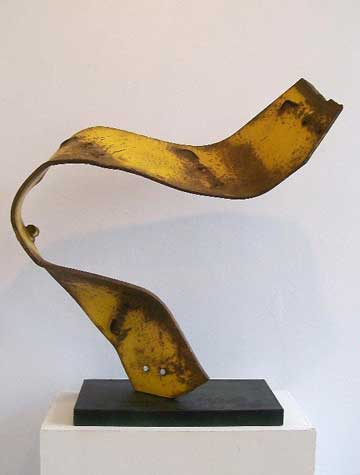
Great Finds
One work in the collaborative artists Robert Then and Richard Rockford current show at the TGW Gallery is called King Richard. A horizontal slab of lovely rust-red-brown iron, on edge, and gently curved and gradually tapered. I think to myself, what King Richard? The poet king--more poet than king--Richard II? (“Let’s talk of graves, of worms, and epitaphs; / make dust our paper and with rainy eyes / Write sorrow on the bosom of the earth...”) Or much-maligned—as historians now tell us—Richard III? (“My kingdom for a horse!”) When gallery owner David Vitrano, intuiting my puzzlement, comes over and quietly informs me: Richard Serra. Of course. Artist of the huge slab arcs of red-brown iron.
Many of the pieces have a look of characteristic work of well-known artists. Does that mean these artists—Then and Rockford—are just imitative artists? But it’s not the artists that are imitative, but the pieces themselves. This is found art. Then and Rockford didn’t so much make the sometimes imitative works as discovered them, salvaged them, recognized them as aesthetic objects, beautiful and interesting forms. That sometimes mimic the beautiful and interesting forms of other artists. Some clean-up here, some welding or other method of composition and attachment of parts there, some treatment to bring out the surface character of the ancient metal. But found pieces, remnants, fragments, of the industrial culture of a recent era.
Moreover, the works on show are not primarily beautiful and interesting because they are imitative. They stand on their own as art. A kind of centerpiece work of the exhibit is an orderly jumble array of what could be—could have been—turbine spiral segments. The work seems in motion. Turning, churning. Eddies and counter-eddies. Seen from different angles, it looks like a pretty completely different piece. You hardly recognize it as the piece you just saw from another perspective. It’s called It’s Complicated.
The basic disposition and purpose of the artists not to radically alter the form of the found materials—not impose form on the material, but respect the material and the form they found it in—kind of an extreme term of what sculptors of various stripes will say about respect for the matrix material, letting the stone or wood or metal be what it wants to be, express what it wants to express, the function of the sculptor to allow and help it do that—contrasts with the violence that has patently occurred some time or times in the past to much of the material. Structural ironwork—girder portions—wrenched out of original configuration rectilinearity. Cast iron or machined steel items—gears and grids of various types—bent and twisted out of shape, or in fragments. You wonder how it could have happened. Through demolition? Industrial accident? Explosion? Equipment misuse?
A piece called Ezechial, composed of circular iron bands in a concentric balance array is a little reminiscent of the work of David Smith, without the extreme high polish metal, and not so precarious in the balance act. A tube metal canister, broken or cut in two and the parts re-welded together, but askew, is like the bomb personification figure that used to appear in editorial page cartoons in the heyday of the Cold War. It’s called Naughty Boy. A huge snake of twisted metal, a little reminiscent of the Laocoön statue serpent from the sea, is called This and That.
Other work, in wire, recalls the circus world artwork of Alexander Calder. One is called Faces. Another Why the Long Face? Another, called Portal, seems to be a head and face in profile.
A given piece can seem to depict several things at once. A piece called Birdman consists of dual wings of bolt-joined sheet steel. Could be a bird, or the prow of a ship, a rostrum to the Romans (whence the rostrum speaker’s platform was so-called).
Other pieces recall work by Louise Nevelson and Picasso. Several recall Picasso. Who made artwork this way himself. The bicycle handlebars and bicycle seat he joined together—in a genius nanosecond, it would seem—to create his iconic Bull’s Head.
There’s a piece in the current show, not a bicycle seat but somewhat in the form of a bicycle seat, with two holes where eyes should be. Another long face. It’s called Nefertiti. Like the Picasso work, perfect.
The Robert Then and Richard Rockford exhibit continues through April 25.
blog comments powered by Disqus|
Issue Navigation> Issue Index > v14n15 (Local Music Issue, Week of Thursday, April 16) > Found art on display at TGW Gallery This Week's Issue • Artvoice Daily • Artvoice TV • Events Calendar • Classifieds |









 Current Issue
Current Issue